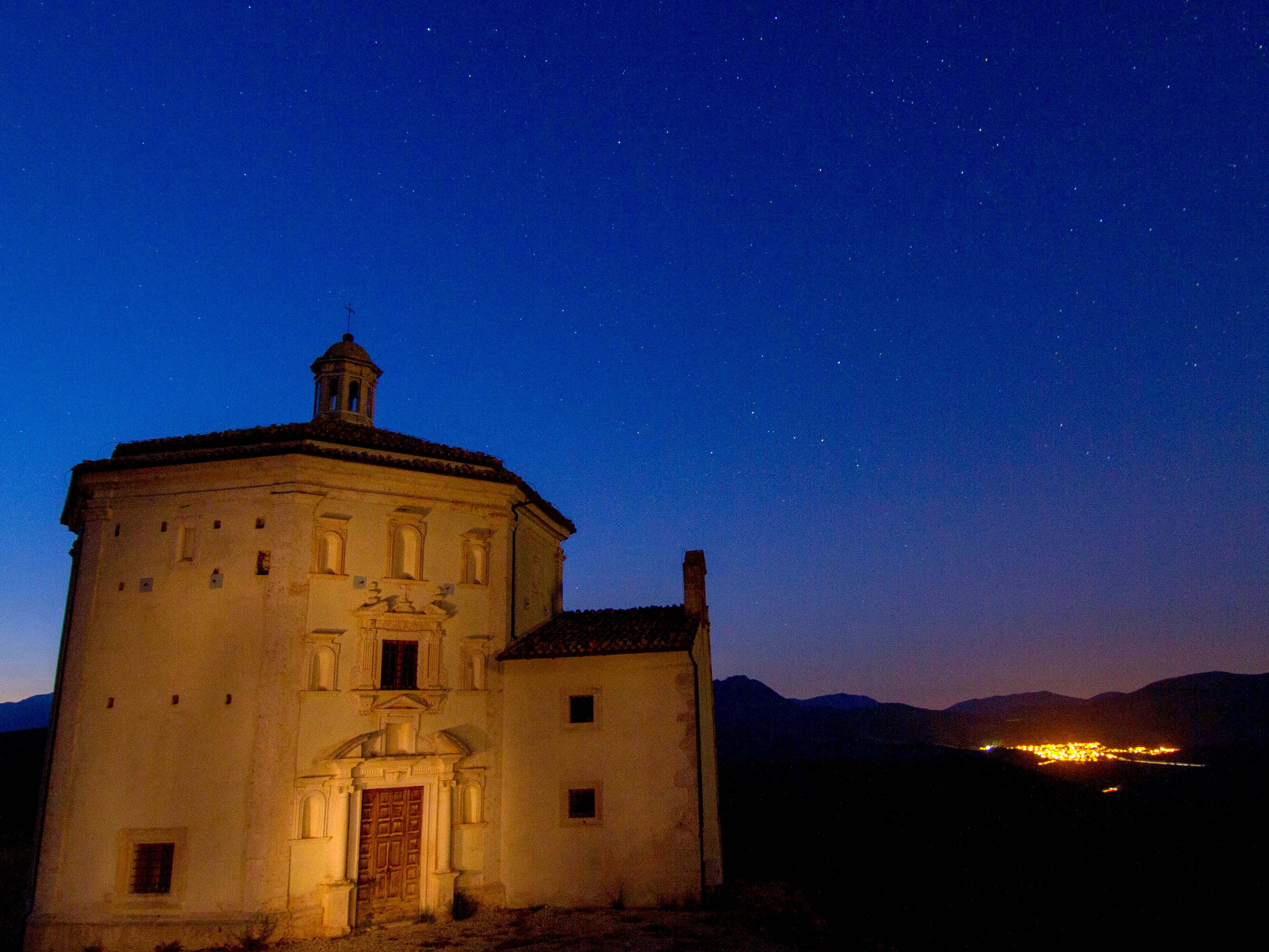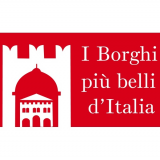
 I borghi più belli d'Italia
I borghi più belli d'Italia
Italian little Italies: Castel del Monte, Shepherd’s Capital
- WTI Magazine #180 Oct 20, 2024
-

 I borghi più belli d'Italia
I borghi più belli d'Italia
Hanging between the peaks of Gran Sasso and Tirino Valley, a miracle of stone takes its form right before our eyes: it is Castel del Monte, represented by a big bell tower. Here, the time of memory is sweeter then elsewhere and it materializes itself immediately after entering the village in admirable pieces of popular architecture such as old portals, windows, “vignali”(outside scales) and arches under which there are passages.
Compactness of this place, combined with the purposes of defense, required the construction of tower-houses, built on the very steep ground. These houses, set out on lines parallel to the contour lines (major streets) and crossed by linked steep and tortuous streets, are linked to each other through arches and vaults (“sporti”).
A visit to this ancient town can start from Porta S. Rocco that once was part of defense walls that are still visible. At the entrance, there is the Church of S.Rocco, built after the plague in 1656 with a façade the shape of a rectangular sail. In Duca degli Abruzzi you can see one of the most ancient wood stove, where people from the castle used to bake bread. Going up the street, you arrive at Palazzo del Governatore, built between 15th and 16th century on the surface that completely occupies the entire insulation. Today it is quite difficult to read the letters on this palace due to its state of conservation. The structure located on big arches, beautiful portal from 1559, and two “bifora” ornamental windows are remarkable.
It is also difficult to recognize the huge size of Palazzo Colelli, in Codacchio street. Some traces of it can be found in the lodge, small tower and in memories of a hundred rooms. Once you arrive at Porta di S. Maria, you can rest in the street with the same name, enjoying the panorama and small church of Madonna delle Grazie, the only church that, along with S.Donato church, survived among many built from the city walls.
Not far away, there is Church of Madonna del Suffragio, built in the first part of the 15th century, rich of baroque plastering decorations. Especially admirable is the major altar (12 m height), a masterpiece made of carved wood covered by gold that is preserved, in the centre, a statue of Madonna dressed like women of that period.
Among other valuable objects, we can see a golden pipe organ from 1508, and paintings by the Florentine Bernardino di Lorenzo (1585) on the lateral altar. The panoramic view overlooking the mountains and valleys, S.Marco valley and Rocca Calasico, seen from the square in front of the church is beautiful. Piazzetta delle Mura, the only street in the old part of village with lined trees, takes us to the period when women were masters of village and when they used to come here to dry grain, to wash cloths or just for chatting, while their men were far away in the pastures.
Following the path that leads towards upper part of the town, through the streets of S. Maria and Clemente you meet a beautiful sequence of “sporti”. They are like galleries that run towards the heart of the city. Legends regarding “sporti” can be understood by observing their arcane appeal, deriving from a construction know-how that was implemented in order to capitalize ground slope, shaping the house’s forms by bypassing stones or building constructions on them. Passing by another kiln and old depository, you enter the heart of the village, where the humble Church of S.Caterina is located.
Immediately after the Municipality House, you enter at the end of Duca degli Abruzzi street, Ricetto, the original village, remained isolated there, where the tower garden was built. Today it is part of Chiesa Matrice church. A narrow path towards the bell tower leads us to a splendid portal. Continuing from Porta del Ricetto to the church, a big defense wall now transformed into houses, attracts your attention.
The Chiesa Matrice church, dedicated to Saint Mark, has only one lateral entrance and inside is full of different styles and materials: wooden, marble and stone altars, renaissance decorations, baroque plastering, wooden sculptures, and statues of angels made of plaster. On the Baptist font, there is a wooden golden organ from 16th century.
After the break in the Taverna Matrice, our tour ends at Porta S. Ubaldo. The square, in front of it, is a crossroads of winds that during the winter cleans the square from snow. Visitors who enter the town from this side have the impression of entering a secure refuge, while one who is leaving is going to be weathered.
Going up from Castel del Monte towards the mountain, immense open spaces of Campo Imperatore are revealed. At an altitude of 1600 M, it looks like an endless prairie, where the sight is lost in the see of the green colour of the grass or the white colour of the snow. The archaeological area of Colle S. Marco is also interesting. Some remains of an ancient settlement (house structures, stables, garden walls) from the 11th century can be found. This site dates to the period before the ancient inhabitants went to Ricetto looking for refuge, where, subsequently, the new village was built.
The name
The toponym Castellum de Montis obviously derives from “fortified centre located between the mountains”.
The product
This is a place of old shepherd’s roads and temporary migration for pasture. Located on the aquilian part of Gran Sasso mountain, Castel del Monte preserves a high quality ovine production, from “pecorino” cheese deriving from strictly uncooked milk “alla ricotta” or rare “marcetto”- delicious cream of fermented pecorino cheese, to “chiaranese”, sheep meat slowly cooked in big food containers as the old shepherds used to prepare.
The recipe
Castel del Monte, being a closed community, for centuries dedicated its existence to pasture and agriculture. Its imaginative cuisine is based on simple and inexpensive ingredients. Here you’ll find a big variety of pasta in its various forms-strangolapreti, surge sfunnete, laganelle, ciafrichiglie, taccuzzelle – based on flour and water. To prepare spicy soup, pasta is mixed with potatoes, beans and vegetables; among these last ones, “volacri”, a vegetable, which is usually harvested in the spring, all belong in the original recipe. Women of the village are very skilled in preparing sweets usually offered during visits such as: crespeglie, calciuniglie, mustaccioglie, néule, nocciatterrati, cicerecchiole.